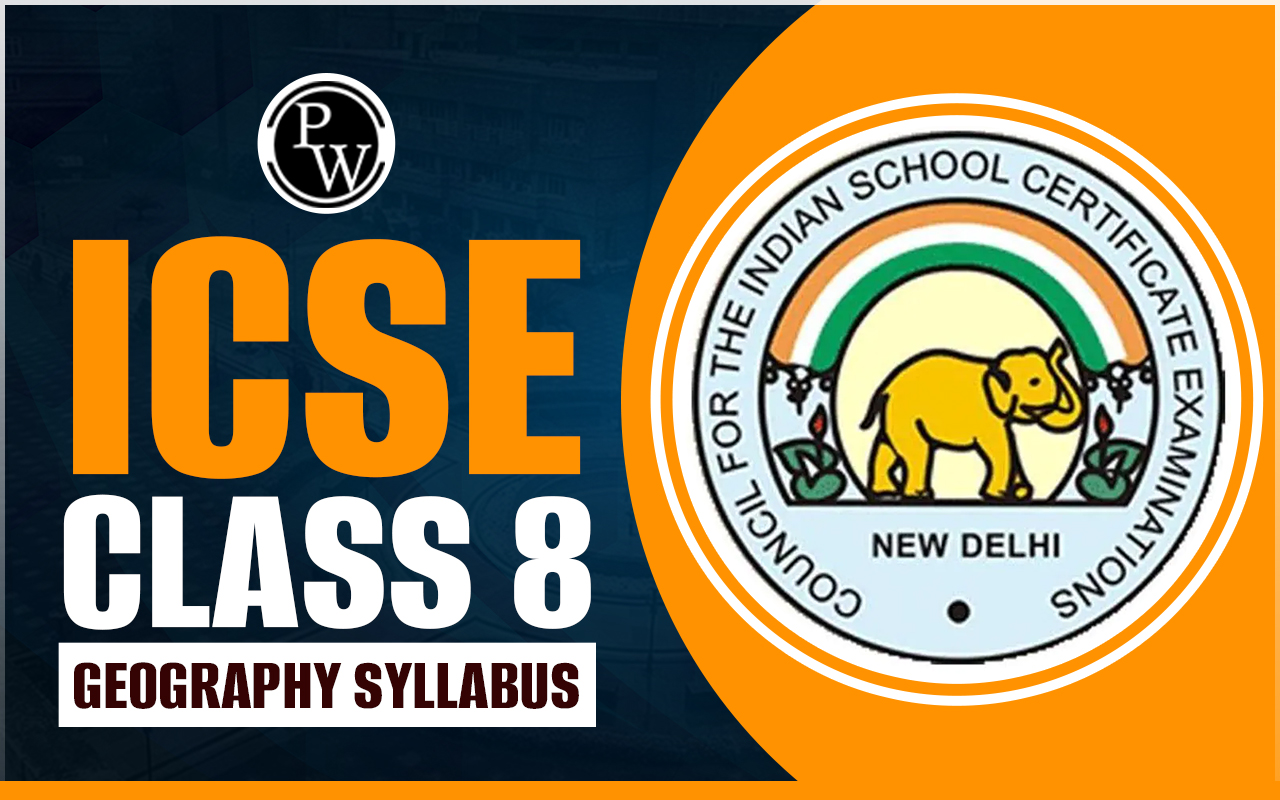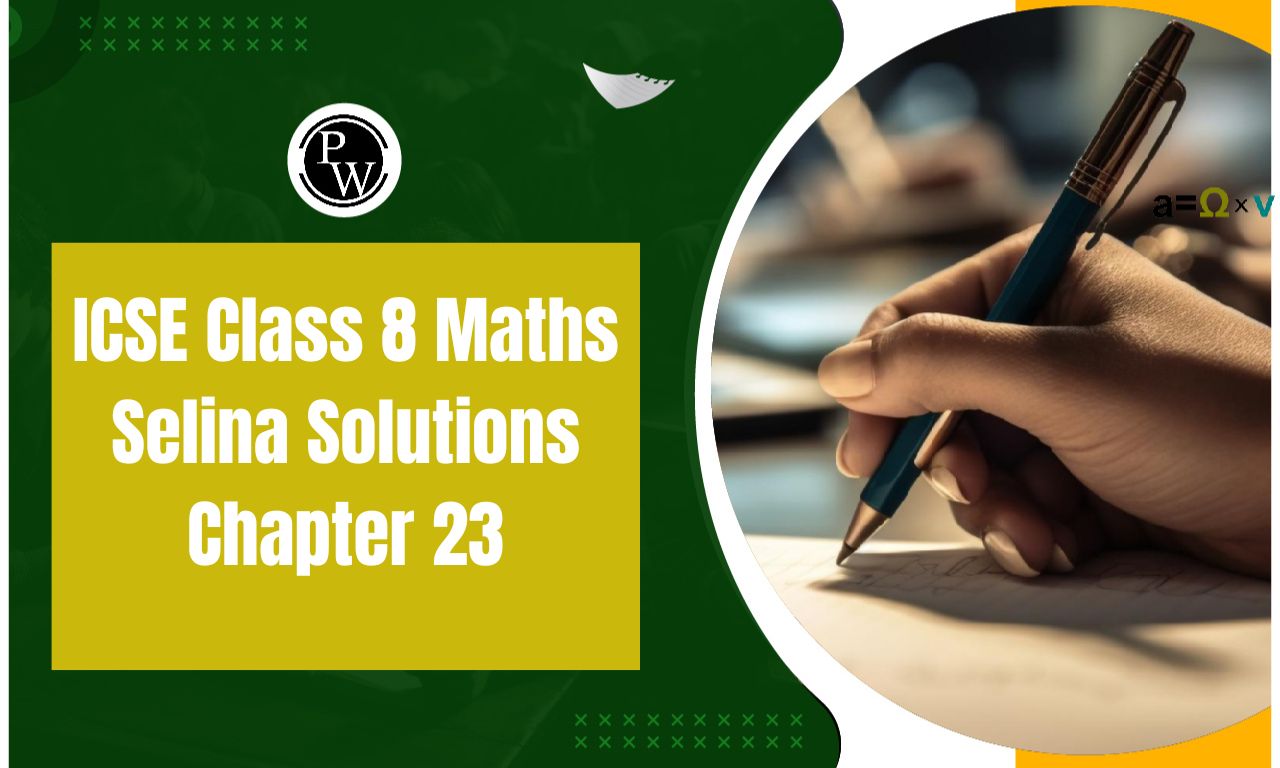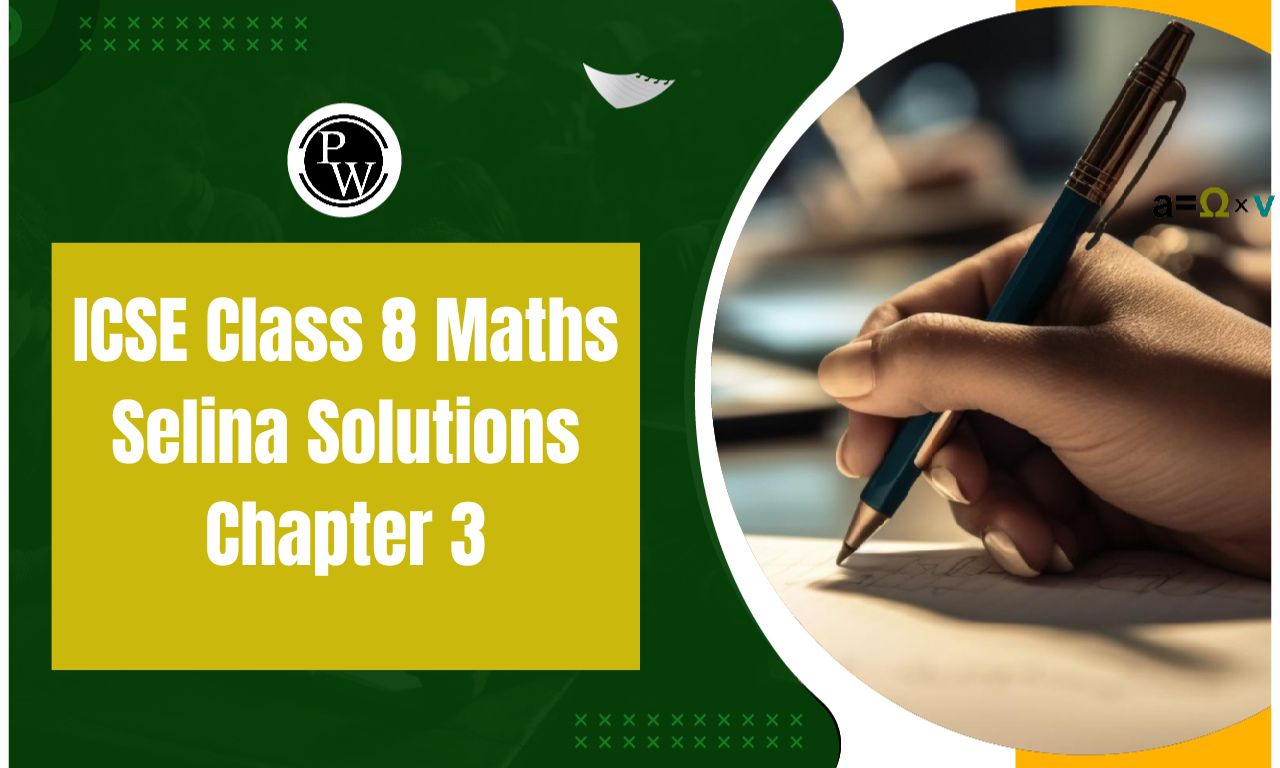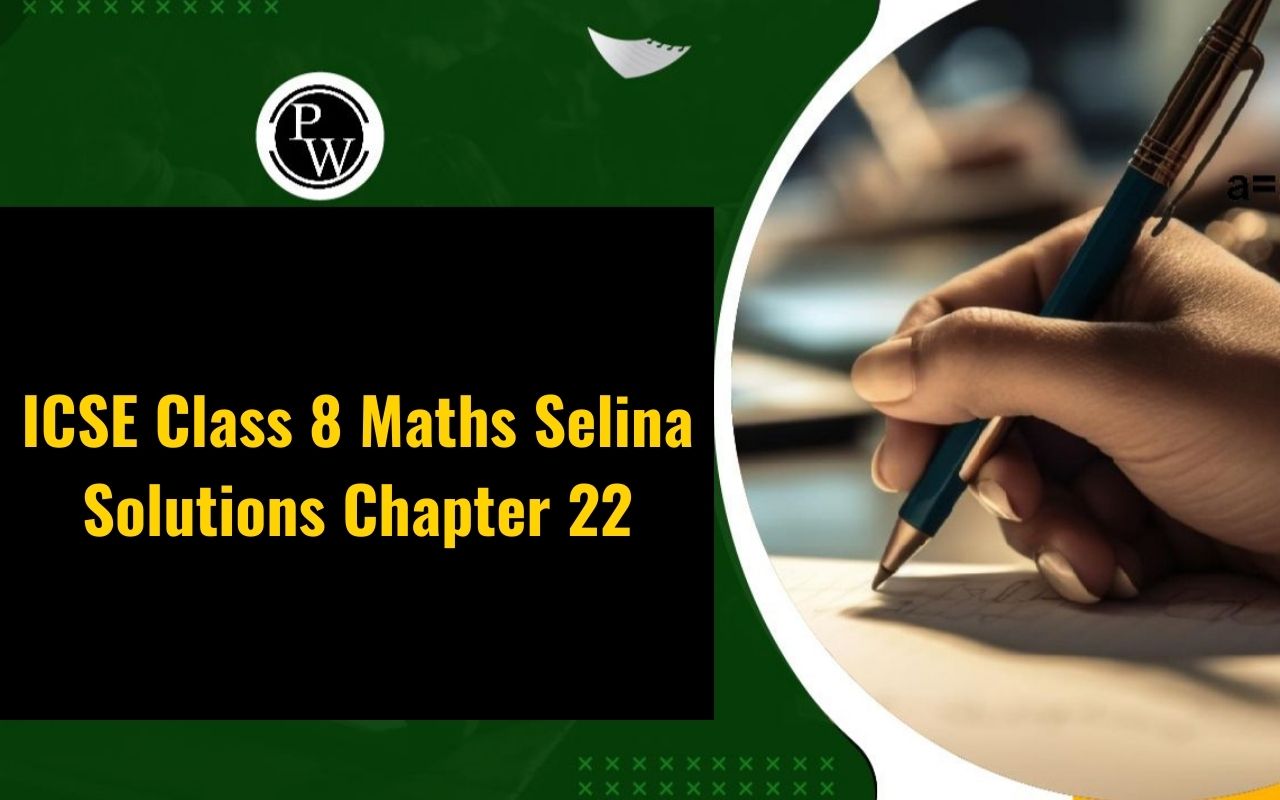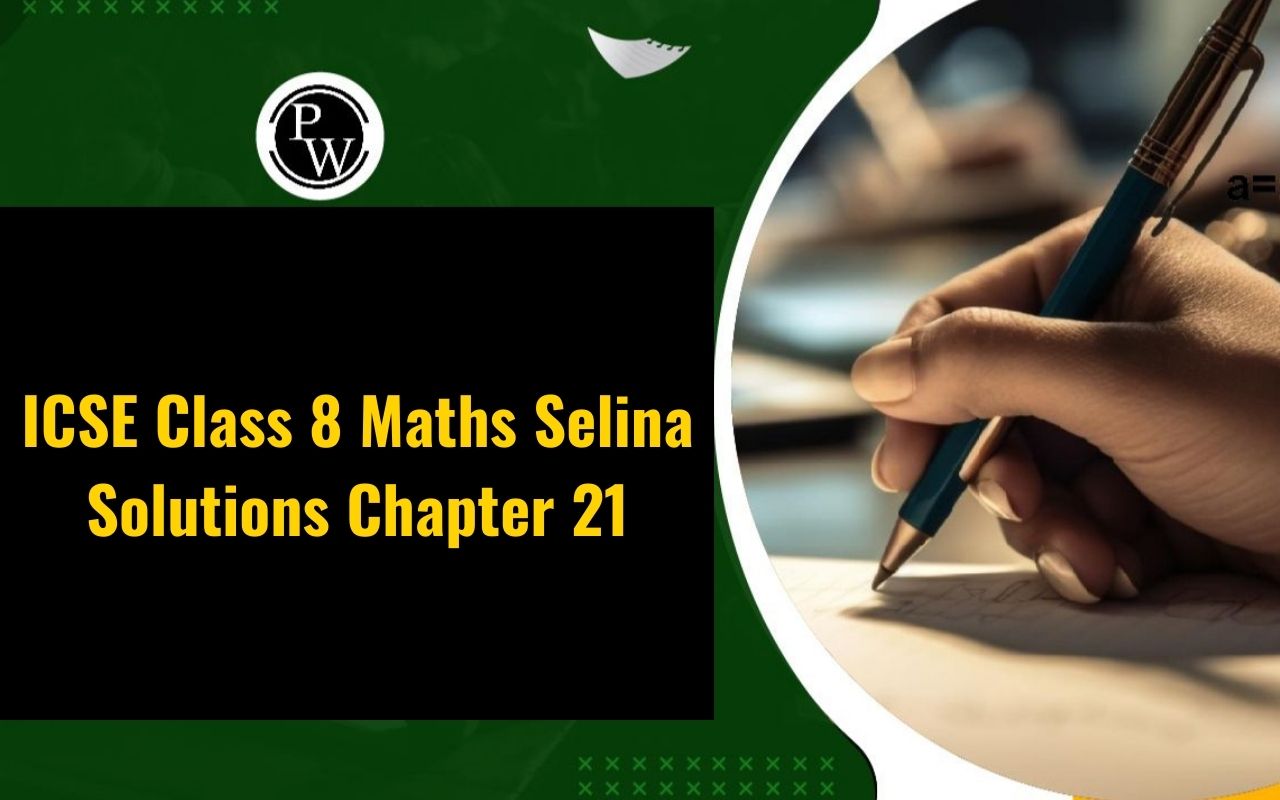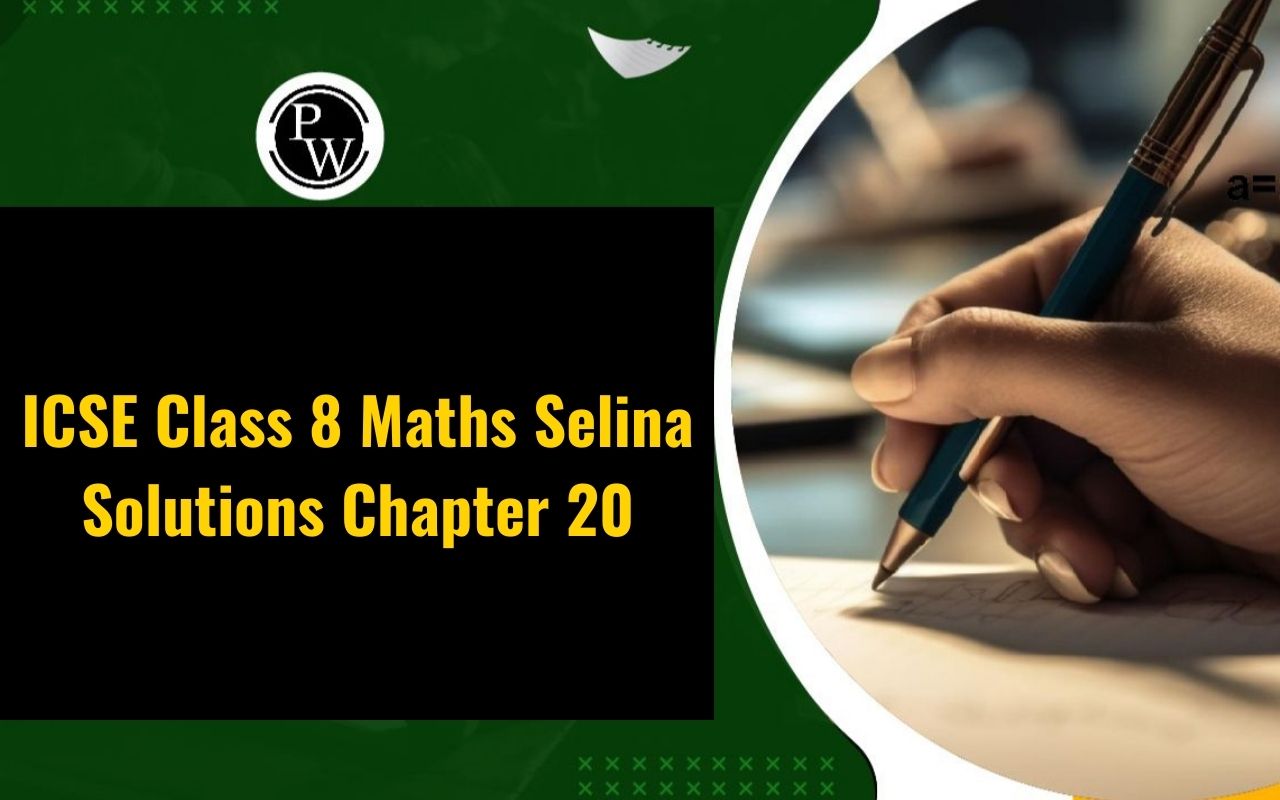
ICSE Class 8 Maths Selina Solutions Chapter 10: These kinds of situations, where a change in one quantity causes a change in another, are common in real life. For instance, if an automobile's speed is raised, it will take less time to travel the same distance. Let's use one more example: to expedite the completion of a building project, we must assign additional labor.
Therefore, the less time it takes to finish the work, the more workers there are. You must have realized by now that there is a relationship between them because variations in one quantity cause variations in other quantities. All of these ideas are covered in ICSE Class 8 Maths Chapter 10. For the convenience of the students, we have included a thorough solution for ICSE Class 8 Maths Selina Solutions Chapter 10 Direct and Inverse Variations in PDF format. The simplest versions of these Selina Solutions have been produced by seasoned educators. Students can quickly understand how the questions are answered by going through them. These solutions will also assist pupils in getting ready for their yearly exams. To obtain the Solution PDF, click the provided link.ICSE Class 8 Maths Selina Solutions Chapter 10 Overview
Chapter 10 of Selina Solutions for ICSE Class 8 Maths focuses on Direct and Inverse Variations. In this chapter, students learn about the relationships between quantities that either vary directly or inversely with each other. Direct variation occurs when one quantity increases (or decreases) in proportion to another. The concept is explored through examples where the relationship can be expressed as y=kx , where k is a constant of proportionality. Inverse variation, on the other hand, describes situations where one quantity increases as another decreases, and vice versa, while their product remains constant. This relationship is typically represented, where k is again a constant.ICSE Class 8 Maths Selina Solutions Chapter 10 PDF
Here we have provided ICSE Class 8 Maths Selina Solutions Chapter 10 for the ease of students so that they can just download the pdf and use it easily without the internet. These ICSE Class 8 Maths Selina Solutions Chapter 10 will help students understand the chapter better.ICSE Class 8 Maths Selina Solutions Chapter 10 PDF
ICSE Class 8 Maths Selina Solutions Chapter 10
Here we have provided ICSE Class 8 Maths Selina Solutions Chapter 10 for the ease of students so that they can prepare better for their upcoming exams - In which of the following tables, x, and y vary directly: (i)| x | 3 | 5 | 8 | 11 |
| y | 4.5 | 7.5 | 12 | 16.5 |
 (ii)
(ii)
| x | 16 | 30 | 40 | 56 |
| y | 32 | 60 | 80 | 84 |
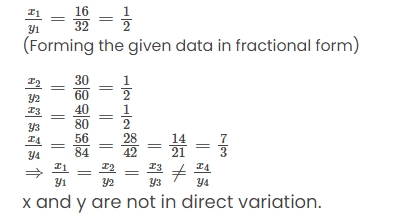 (iii)
(iii)
| x | 27 | 45 | 54 | 75 |
| y | 81 | 180 | 216 | 225 |
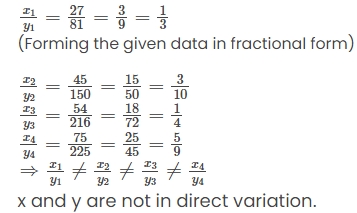
Question 2.
If x and y vary directly, find the values of x,y , and z.
| X | 3 | x | y | 10 |
| Y | 36 | 60 | 96 | Z |
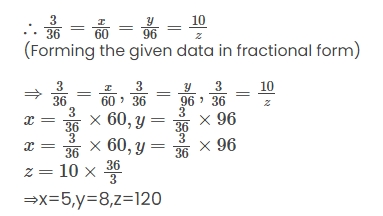
| X | 3 | 5 | 8 | 10 |
| Y | 36 | 60 | 96 | 120 |
| Diesel (in liters) | 28 | 64 |
| Distance (in km) | 448 | x |

Question 4.
For 100km, a taxi charges ₹ 1,800. How much will it charge for a journey of 120 km?
Solution:- Let a charge of the car is ₹ x in 120km| Distance in (km) | 1800 | x |
| Taxi charges (₹) | 100 | 120 |

Question 5.
If 27 identical articles cost ₹ 1,890, how many articles can be bought for ₹ 1,750?
Solution:- Let x number of articles be purchased in ₹ 1750| Cost (₹) | 1890 | 1750 |
| No. of articles | 27 | X |

Question 6.
7kg of rice costs Rs.1,120. How much rice can be bought for Rs.3,680?
Solution: Rice: Cost : Rice: Cost 7kg: 1120 :: x kg : 3680Question 7.
6 notebooks cost ₹ 156, find the cost of 54 such note-books.
Solution:- Notebooks: cost:: notebooks: cost
Question 8.
22 men can dig a 27 m-long trench in one day. How many men should be employed for digging a 135 m-long trench of the same type in one day?
Solution:- Men: length trench:: men: length of trench 22 : 27m :: x : 135m (Expressing in ratios)Question 9.
If the total weight of 11 identical articles is 77 kg, how many articles of the same type would weigh 224 kg?
Solution:- No. of: weight :: no. of articles: weight Articles
Question 10.
A train is moving at a uniform speed of 120km per hour.
(i) How far will it travel in 36 minutes? Solution:- Speed of train in 60 minutes =120 km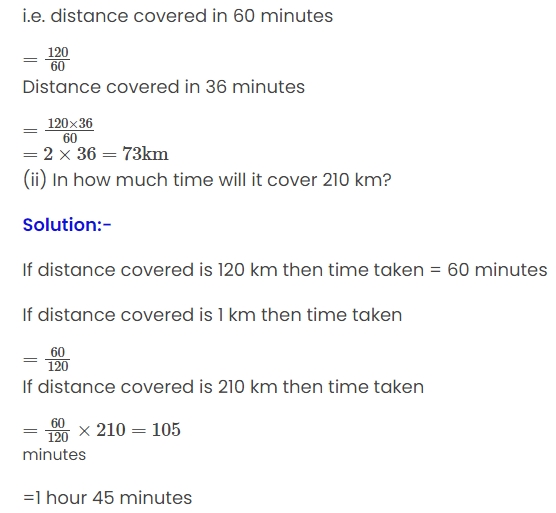
Question 1.
Check whether x and y vary inversely or not.
(i)| x | 4 | 3 | 12 | 1 |
| y | 6 | 8 | 2 | 24 |
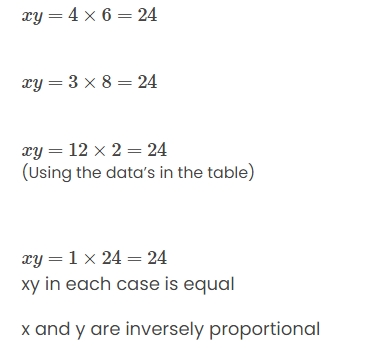
Question 2.
If x and y vary inversely, find the values of 1, m, and n:
(i)| x | 4 | 8 | 2 | 32 |
| y | 4 | l | m | n |
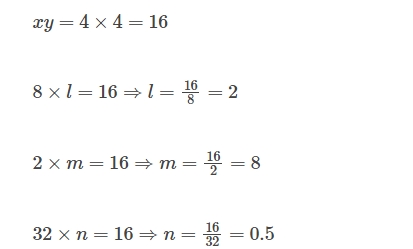
(ii)
| x | 24 | 32 | m | 16 |
| y | l | 12 | 8 | n |
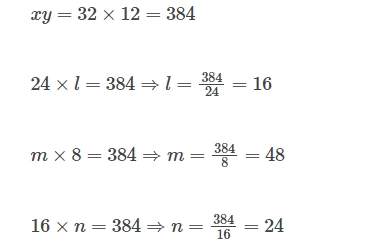
Question 3.
36 men can do a piece of work in 7 days. How many men will do the same work in 42 days?
Solution:- Men: Days :: Men: Days 36 : 7 : x : 42 ∴ By inverse proportionalQuestion 4.
12 pipes, all of the same size, fill a tank in 42 minutes. How long will it take to fill the same tank, if 21 pipes of the same size are used?
Solution:-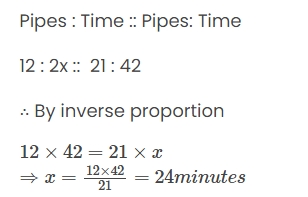
Question 5.
In a fort 150 men had provisions for 45 days. After 10 days, 25 men left the fort. How long would the food last at the same rate?
Solution:-
Benefits of ICSE Class 8 Maths Selina Solutions Chapter 10
Concept Clarity : The chapter provides clear explanations and examples to help students understand the concepts of direct and inverse proportions. This clarity enables them to grasp how quantities relate to each other and how changes in one affect the other.
Problem-Solving Skills : By practicing problems related to direct and inverse variations, students develop strong problem-solving skills. They learn to apply mathematical formulas and methods to analyze and solve problems involving these types of relationships.
Real-World Applications : Understanding direct and inverse proportions helps students recognize these relationships in real-life situations. This practical knowledge can be applied to fields such as science, economics, engineering, and everyday decision-making.
Foundation for Advanced Topics : Mastery of direct and inverse proportions lays a solid foundation for more advanced topics in mathematics and science. It prepares students for higher-level studies where such proportional relationships are fundamental.
Logical Thinking : Working with direct and inverse proportions requires logical thinking and reasoning skills. Students learn to analyze problems, formulate strategies, and justify their solutions, which enhances their overall cognitive development.
Preparation for Exams : Since direct and inverse proportions are frequently tested in exams, studying this chapter thoroughly ensures that students are well-prepared to tackle related questions confidently.
ICSE Class 8 Maths Selina Solutions Chapter 10 FAQs
How to know if it is direct or inverse variation?
What is a real life example of direct and inverse variation?
Which chapter is hard in maths class 8?
What is the formula for inverse variation?
How can you identify direct variation?

